The museum includes a relocated Victorian Pharmacy of which I took no pictures. It's a very small space!
I am conflicted when it comes to the Steampunk genre. I love Victorian age imagery and style, incorporating it into my art and to an extent my interior, and clothing. I have always been interested in science particular natural history. Steampunk is therefore up my alley as far as the things I'm enthusiastic about. However some of it is downright silly. The gratuitous/thoughtless use of gears, goggles worn on hats never on eyes, and ridiculous ray guns kinda gets my goat but not as much as it does my BF's
'Some of you are keenly aware of my misgivings regarding this whole Steampunk thing. Today NG provided me with the tools to succinctly opine at any given moment. Therefore, instances of that which has hitherto been referred to as "Steampunk", yet exclusively places aesthetic over substance (i.e. damn near the whole sodding movement), I shall henceforth refer to as "SteamPimp". Reserving Steampunk for applications where cogs might intersect in a meaningful and possibly even functional manner.'
As it turns out they have been doing it wrong. Yes cogs and copper are pretty but real Victorian scientific gadgets are mostly made with brass and they have knobs. Sometimes these knobs are knurled. Sometimes there is a wormgear but otherwise, they aren't bedazzled with gears!
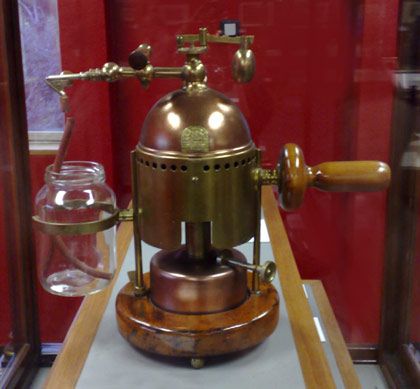
Lister's carbolic acid steam spray
c. 1880
A particularly pretty example of this device as it turns out. What do you do with it? Sterilise the operating theatre in a hospital.
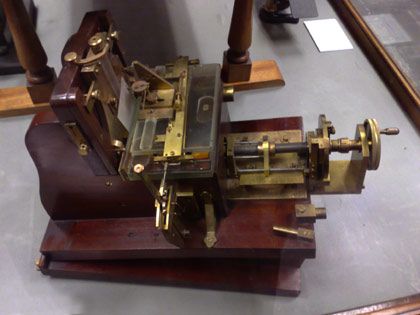
Microruling machine
c.1910
Unfortunately the accompanying label did not explain what it does - though none of the other labels on things did either. Here you go: link. Essentially it rules microscopic lines very close together on a piece of glass to create diffraction patterns from which to calibrate the field of view under a microscope and stuff. Clear as mud? You're welcome.

X-ray tubes
c.1905
They are a bit like a lightbulbs but instead of visible light they emit x-rays: link.
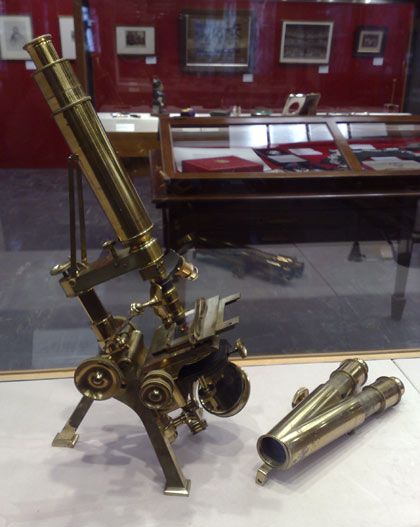
Compound monocular and binocular microscope c. 1864

Compound monocular microscope
c. 1820
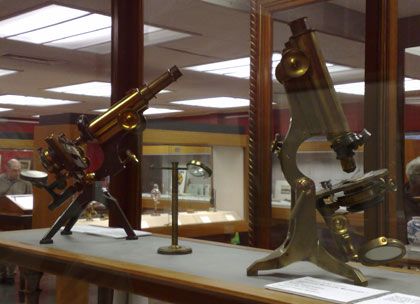
More microscopes
c. late 1800s
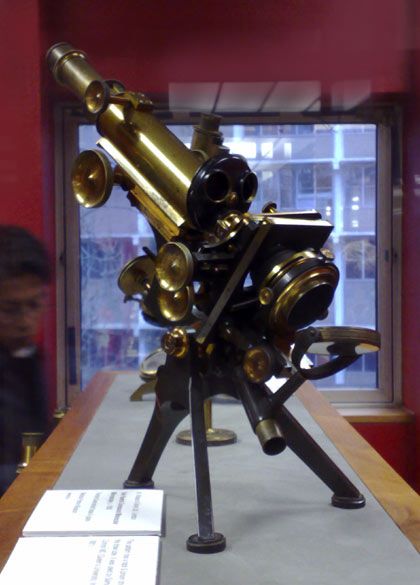
Compound monocular microscope c. late 1800s
No comments:
Post a Comment